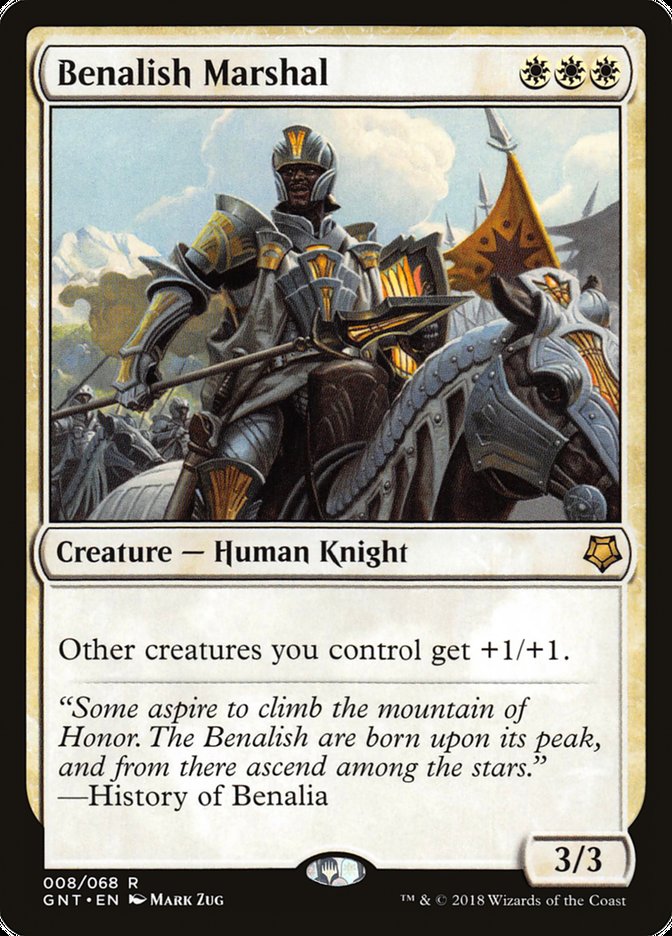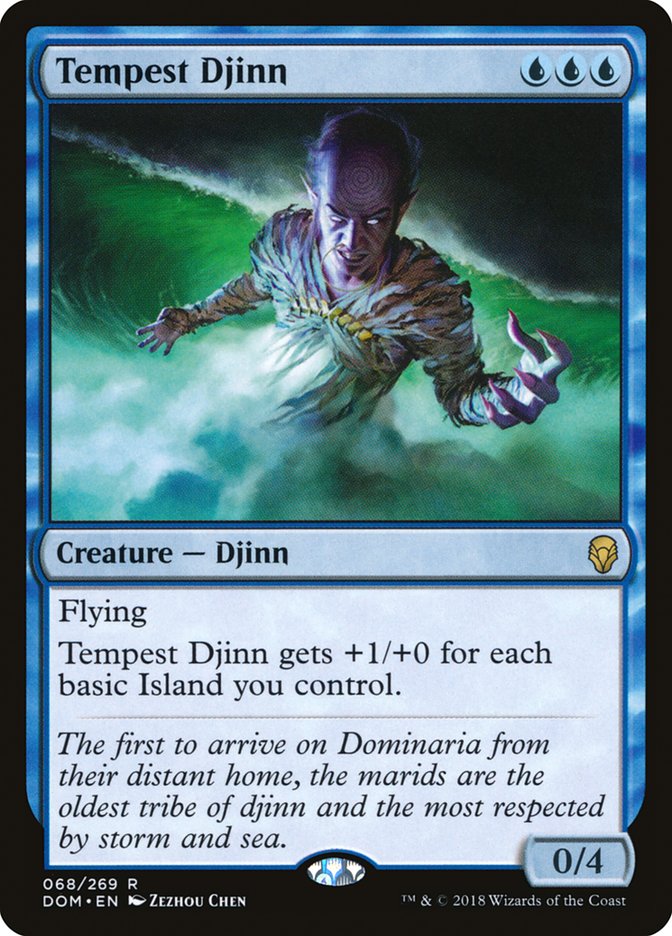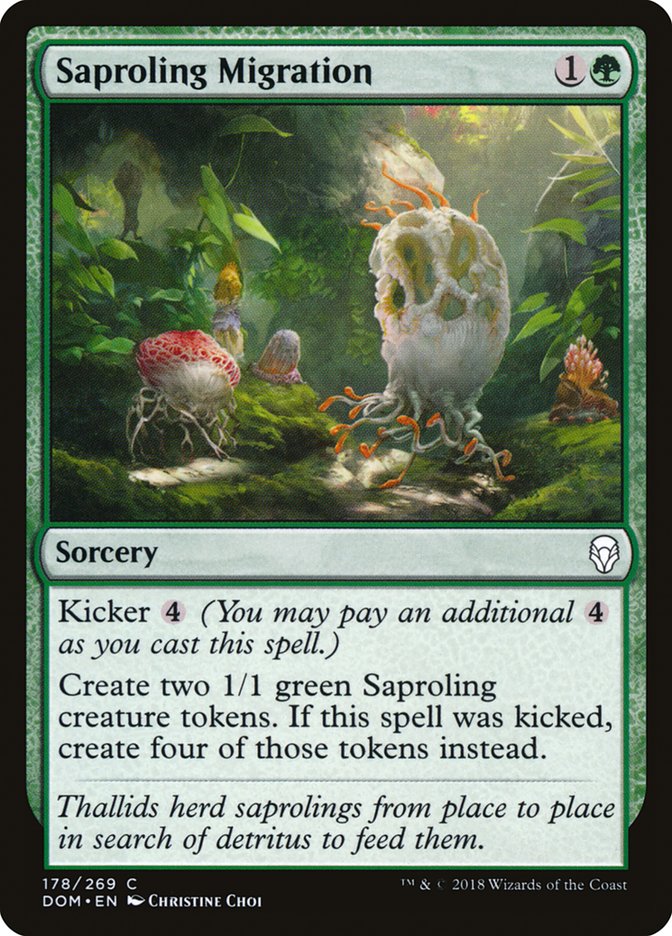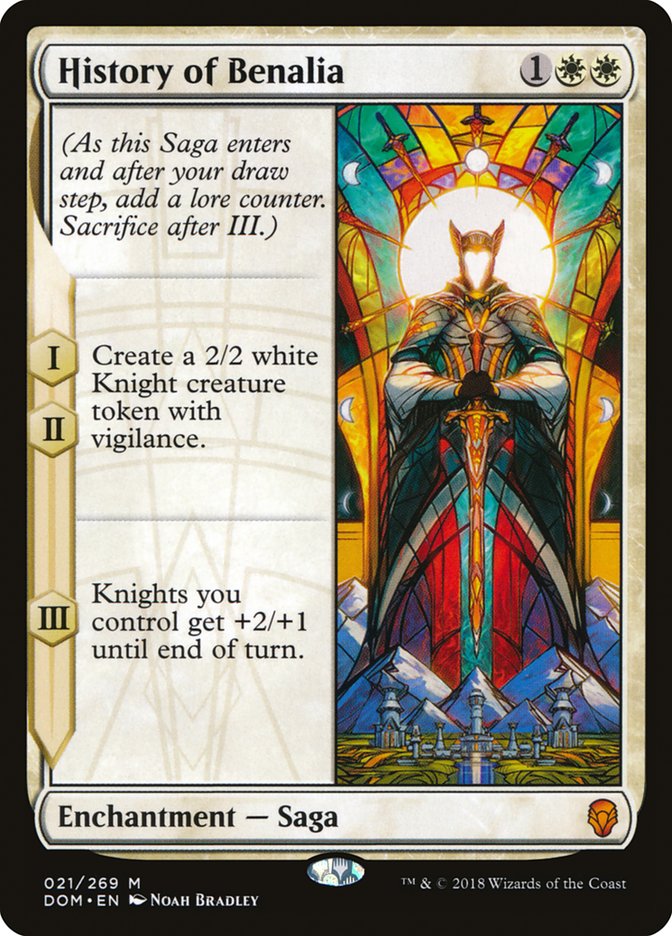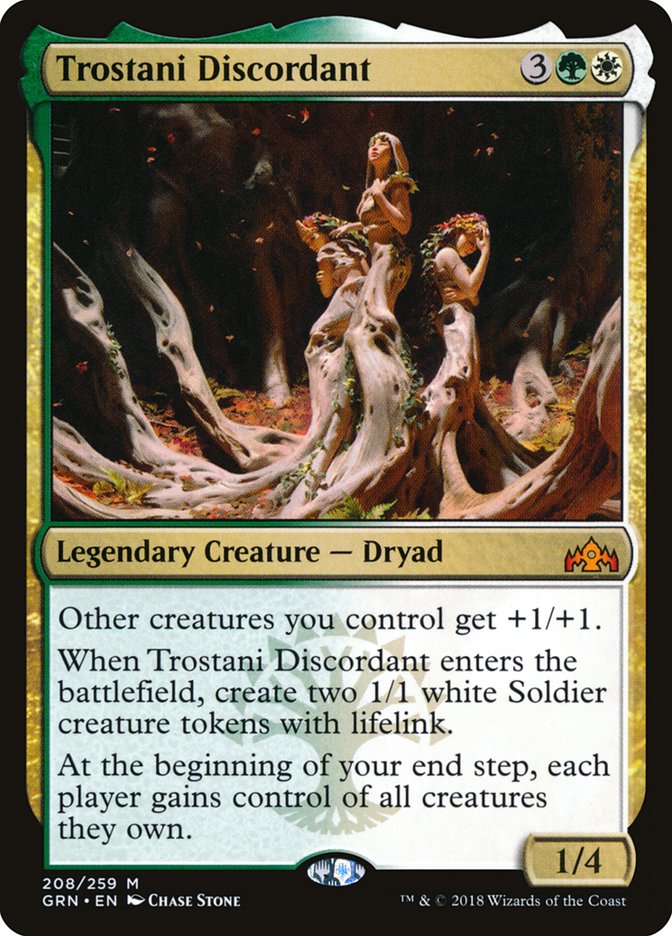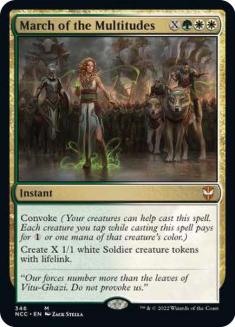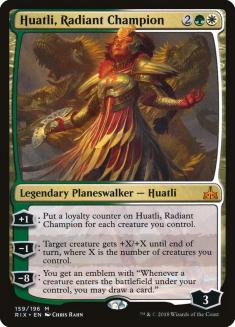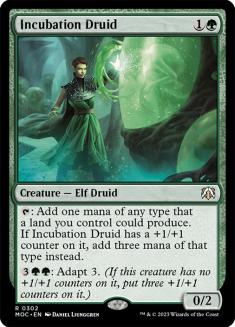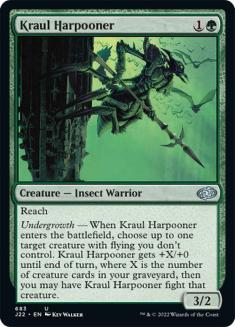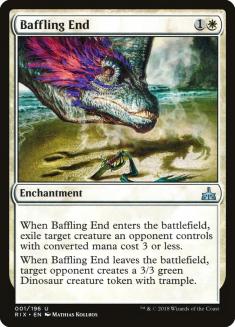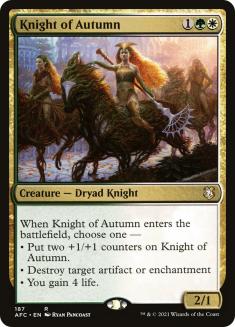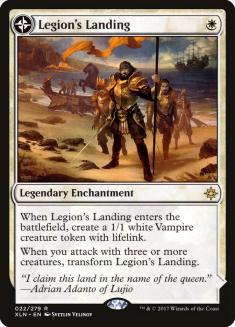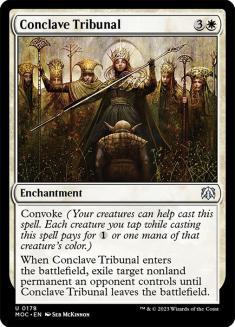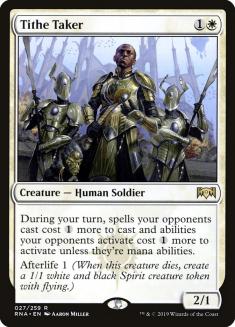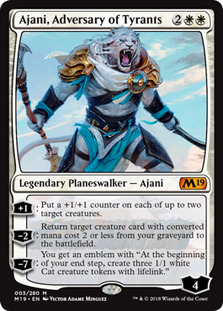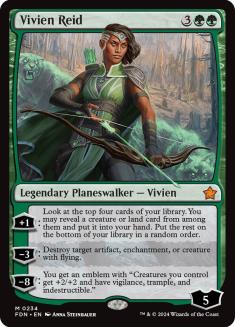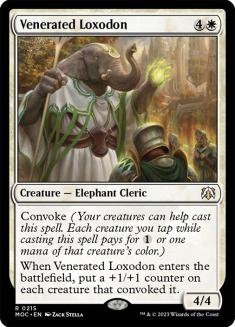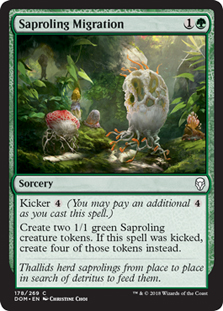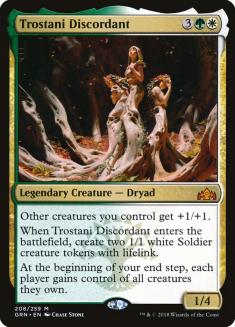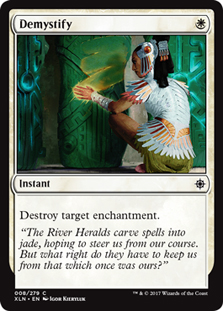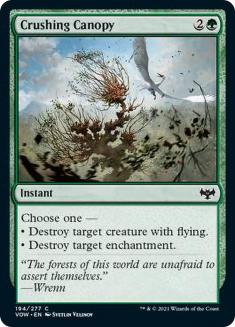Earlier this year, Wizards of the Coast announced that at the end of February, the Top 8 Mythic Constructed players would get an invite to the Mythic Invitational at PAX East – the highest-EV Magic tournament of all time. Everyone was given 28 days to get to the top of the Magic Arena leaderboard and stay there. This was the system to qualify for the Mythic Invitational, and upon its unveiling, I scoffed and thought anyone seriously trying to qualify that way was crazy. It seemed like way too much work and I didn’t even think about trying.
I started playing some best-of-one ladder matches on Arena just for fun to complete my quests with Selesnya Tokens and Mono-Red Aggro. The Selesnya Tokens list was made specifically for best-of-one and then I later theorycrafted a sideboard and brought it to SCG Dallas in February. I went 6-3 on Day 1 at that tournament, but I played against six bad matchups and still felt the deck was good. Shortly after getting back from Dallas, Evan Whitehouse informed me that grinding up the ladder playing best-of-one was insane and that best-of-three was significantly better. Since I had just enough wildcards for the Selesnya sideboard – conveniently mostly uncommons – I decided to try it.
I went from Platinum 3 to Diamond in a couple of hours.
Now, you may ask: How is best-of-three is better than best-of-one? The answer is that some games of Magic you just can’t win. You can get unbelievably flooded, totally mana screwed, or just mulligan to oblivion. In best-of-one, you get punished for every single one of these, even versus a weaker opponent. Best-of-three lets you punish these weaker opponents and make up for the game you could not win due to variance. Just as an example, if you go 6-3 in games in best-of-one on Arena, you’ll gain three stars. In best-of-three, you can get six stars with the same game record, and in the worst case, you’re up two stars and a game in another match.
The Rise of Monocolored Decks
With Robert Wagner-Krankel winning the Open in Dallas with Mono-Blue Aggro and Abe Corrigan winning the Standard Classic in Dallas with Azorius Aggro, the metagame was starting to change. Specifically, it was shifting to monocolored (or very close to it) decks. As such, I added the fourth Kraul Harpooner to my sideboard, making the Mono-Blue Aggro matchup very favorable. With Mono-White/Azorius Aggro being a very good matchup and Mono-Red Aggro a good matchup as well, that meant that the entire metagame was highly favorable for me.
Additionally, these monocolored decks pushed my worst matchups, Esper Control and Wilderness Reclamation decks, out of the metagame. In this environment, I quickly climbed up to Mythic on Arena, and days before the Mythic Championship, I climbed all the way up to #10. From there I decided to sit on my rank; without a ranking decay, there was no incentive to play more games.
The Climb
Soon I had dropped down to #18, so I started to play matches of Constructed events in order to hype myself up and get myself in the mood to start climbing the ladder again. Sometime in the early morning, I played three more matches, won them all, and climbed to #2 on the ladder. By noon, I was back down to #3. By midnight of the next day, I was down to #11.
So, I played again.
I won three matches again and got to #2. The next day, by midday I was #4 and then #7 by the evening. On Tuesday night I played again, won again, and was back to #2. I held on to #2 until I went to bed at 6:00am on Thursday February 28th.
Only nine hours to go.
By 1:00pm, with two hours to go, I had dropped to #11. I had to play, so I played two more matches, won them, and was at #2, which this time stuck.
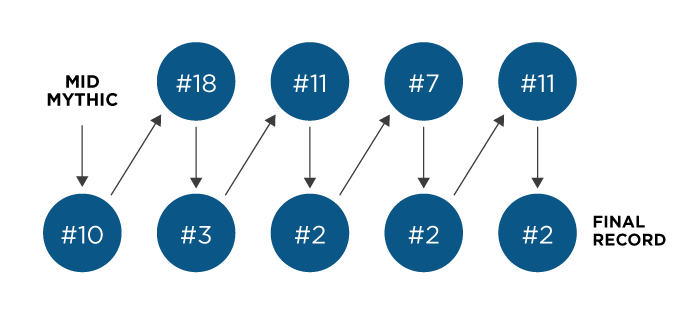
For those counting, once I had gotten to #10 Mythic, I won a mere nine matches in a row to get Top 8 at the end of the season. Those matches probably took only two hours altogether, but that week Arena totally occupied my mind. I didn’t do homework because I couldn’t do homework. I was way too stressed, and it was awful. Whatever you imagine it was like, it was worse than that, and I’m just grateful that I made it and that I never have to do that ever again.
The Deck
For the entire climb, I played only one deck: Selesnya Tokens. The deck is well=positioned in metagames that are filled with monocolored decks and lacking in decks that you want Negate or Duress against, like Esper Control and Wilderness Reclamation decks.
The most important skills with Selesnya Tokens are knowing how and when to attack to push your opponent into an awkward position and not let them trade well while sequencing your spells properly. The sequencing can be particularly difficult and punishing and, if not done properly, the result is not just a small disadvantage; often you simply cannot cast your spells and you instantly lose the game. Both skills are difficult to master and do not usually naturally occur in the same deck, so it’s common for players to struggle with one or the other.
Selesnya Tokens is naturally a little underpowered in terms of raw power level compared to many of the other decks in the format. Luckily, Magic is a game about context and the context that Selesnya operates best in is a metagame dominated by monocolored aggro decks. Not only that, but because Selesnya Tokens has never taken up a significant portion of the Standard metagame, people often don’t know how to sideboard against or even have powerful sideboard cards against the deck in the first place, which gives the deck another significant advantage. I would recommend extensive practice if you want to play the deck and do well at a tournament, even if it is just goldfishing games on your own (something I love to do between rounds).
Creatures (14)
Planeswalkers (2)
Lands (21)
Spells (23)

The recent addition of Huatli, Radiant Champion over Unbreakable Formation was something innovated by Sam Black for the Mythic Championship. Huatli has been very good for me, usually threatening an immediate ultimate. The ultimate is unbeatable in a deck where your cards turn into multiple creatures, your creatures turn into mana via convoke spells, and then all of those creatures turn into a lethal attack force via Flourish.
Sideboarding
VS Mono-Blue Aggro
Out:
In:
In this matchup, it’s important to keep in mind that landing a History of Benalia or Venerated Loxodon is usually game over because those cards pack so much more power and toughness than any card in Mono-Blue Aggro. The addition of Tithe Taker acts as a one-sided Thalia, Guardian of Thraben, and Kraul Harpooner out of the sideboard takes their lunch. The matchup is very favorable.
VS Mono-Red Aggro
Out:
In:
While one might assume that that this matchup is a slam dunk with the pile of lifelinking tokens, Goblin Chainwhirler by itself makes the matchup merely favorable. I recommend holding your Saproling Migrations until Turn 5 if you can so that you can cast Saproling Migration and Venerated Loxodon in the same turn (especially post-sideboard). Last, hold your Knight of Autumns for Experimental Frenzy Games 2 and 3 if you can, since it’s their most important card besides Chainwhirler.
VS Mono-White Aggro/Azorius Aggro
Out:
In:
Mono-White and Azorius Aggro are excellent matchups. Here the plan to stay alive as long as possible while drawing as many copies of March of the Multitudes as you can. Consider bringing in Kraul Harpooner if they show you Healer’s Hawk or other fliers.
VS Sultai Midrange
Out:
In:
During Guilds of RavnicaStandard, Golgari Midrange was a good matchup for Selesnya. The combination of March and Flourish let you kill them out of nowhere in the drawn-out games that their deck wants to play. Unfortunately, the addition of Hydroid Krasis and counterspells post-sideboard has made the matchup even. The best way to play around Finality is Trostani Discordant plus Venerated Loxodon, so hold your Loxodons if you can.
VS Esper Midrange
Out:
In:
Far and away Selesnya’s worst matchup. I recommend just going all-out and trying to aggro them down. This works out some percentage of the time, since Esper Control does have a fail rate, especially if you just force them to have a Kaya’s Wrath on Turn 4.
Out:
In:
Being as aggressive as possible works a lot better here, since Wilderness Reclamation decks lack sweepers. Kraul Harpooner comes in just for the beats, as a two-mana three-power creature kills quickly and lets you interact with their enchantments while still clocking them.
The Grind Is Complete
Post-Mythic Championship Cleveland, the metagame has shifted more towards Esper Control. If it shifts back towards the monocolored decks that I preyed upon to qualify for the Mythic Invitational, Selesnya Tokens will be perfectly positioned to crush the Standard metagame again.


